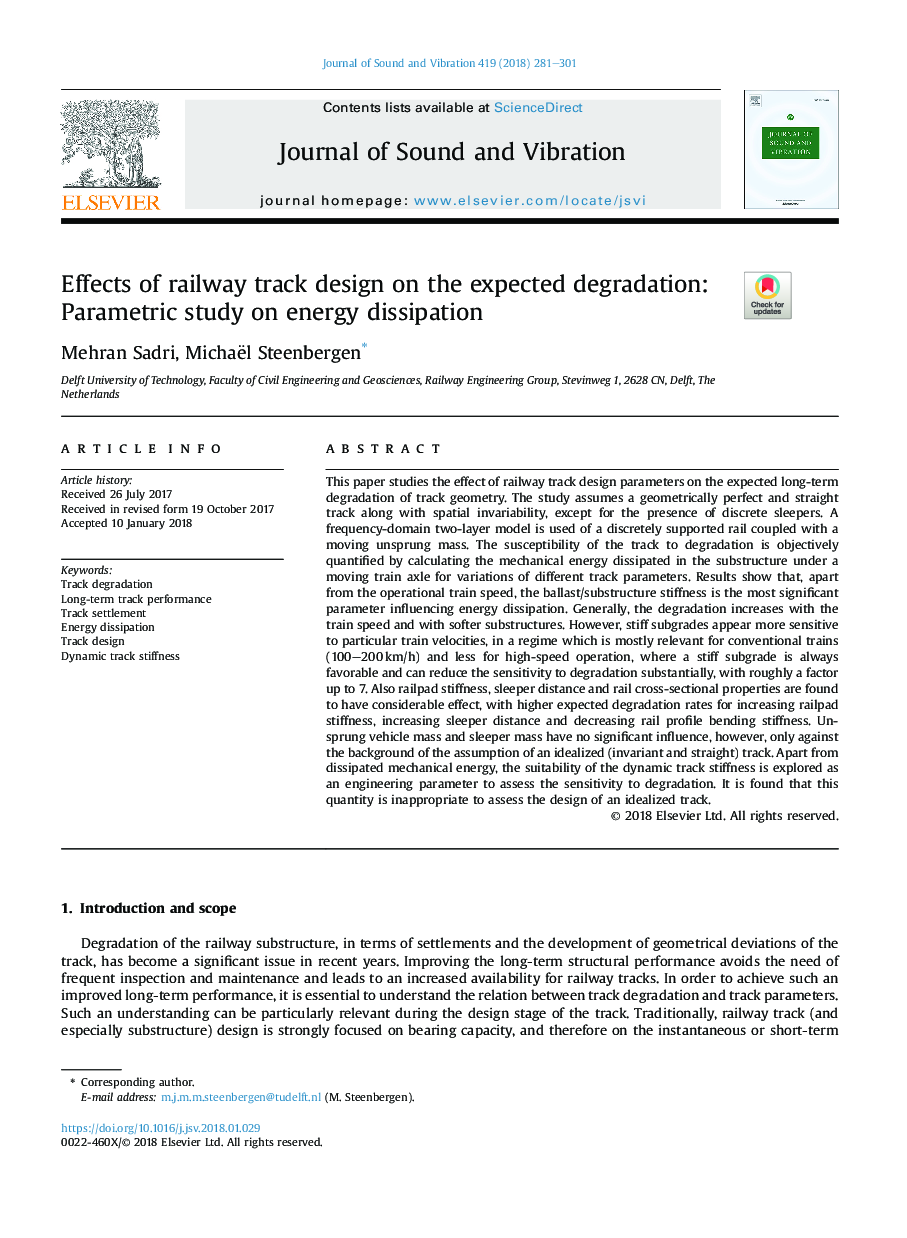| کد مقاله | کد نشریه | سال انتشار | مقاله انگلیسی | نسخه تمام متن |
|---|---|---|---|---|
| 6753653 | 1430814 | 2018 | 21 صفحه PDF | دانلود رایگان |
عنوان انگلیسی مقاله ISI
Effects of railway track design on the expected degradation: Parametric study on energy dissipation
ترجمه فارسی عنوان
اثرات طراحی مسیر راه آهن بر تخمین مورد انتظار: مطالعه پارامتریک بر روی تخلیه انرژی
دانلود مقاله + سفارش ترجمه
دانلود مقاله ISI انگلیسی
رایگان برای ایرانیان
کلمات کلیدی
تخریب مسیر، عملکرد طولانی مدت مسیر، ردیابی مسیر، از بین بردن انرژی، طراحی مسیر سختی مسیر دینامیکی،
موضوعات مرتبط
مهندسی و علوم پایه
سایر رشته های مهندسی
مهندسی عمران و سازه
چکیده انگلیسی
This paper studies the effect of railway track design parameters on the expected long-term degradation of track geometry. The study assumes a geometrically perfect and straight track along with spatial invariability, except for the presence of discrete sleepers. A frequency-domain two-layer model is used of a discretely supported rail coupled with a moving unsprung mass. The susceptibility of the track to degradation is objectively quantified by calculating the mechanical energy dissipated in the substructure under a moving train axle for variations of different track parameters. Results show that, apart from the operational train speed, the ballast/substructure stiffness is the most significant parameter influencing energy dissipation. Generally, the degradation increases with the train speed and with softer substructures. However, stiff subgrades appear more sensitive to particular train velocities, in a regime which is mostly relevant for conventional trains (100-200â¯km/h) and less for high-speed operation, where a stiff subgrade is always favorable and can reduce the sensitivity to degradation substantially, with roughly a factor up to 7. Also railpad stiffness, sleeper distance and rail cross-sectional properties are found to have considerable effect, with higher expected degradation rates for increasing railpad stiffness, increasing sleeper distance and decreasing rail profile bending stiffness. Unsprung vehicle mass and sleeper mass have no significant influence, however, only against the background of the assumption of an idealized (invariant and straight) track. Apart from dissipated mechanical energy, the suitability of the dynamic track stiffness is explored as an engineering parameter to assess the sensitivity to degradation. It is found that this quantity is inappropriate to assess the design of an idealized track.
ناشر
Database: Elsevier - ScienceDirect (ساینس دایرکت)
Journal: Journal of Sound and Vibration - Volume 419, 14 April 2018, Pages 281-301
Journal: Journal of Sound and Vibration - Volume 419, 14 April 2018, Pages 281-301
نویسندگان
Mehran Sadri, Michaël Steenbergen,
